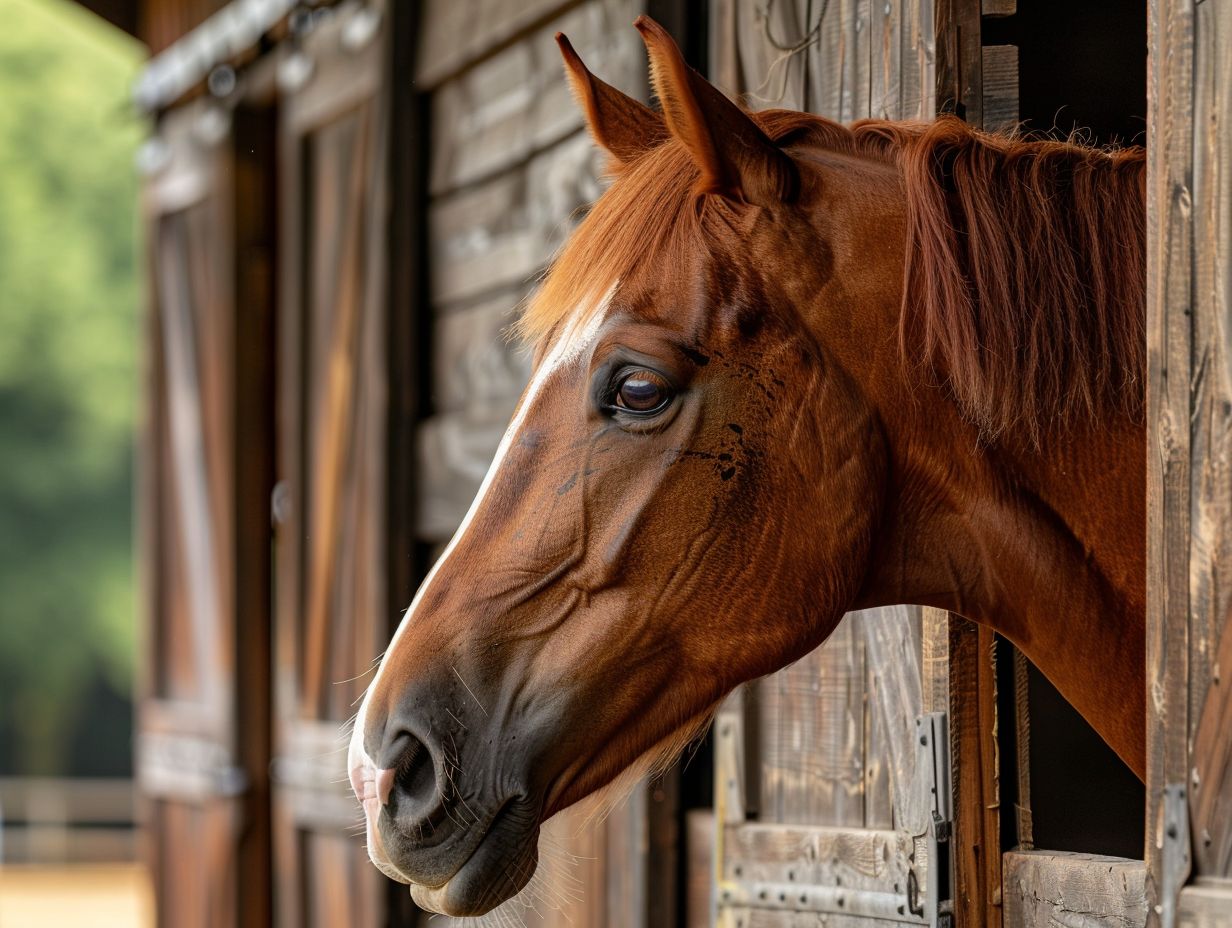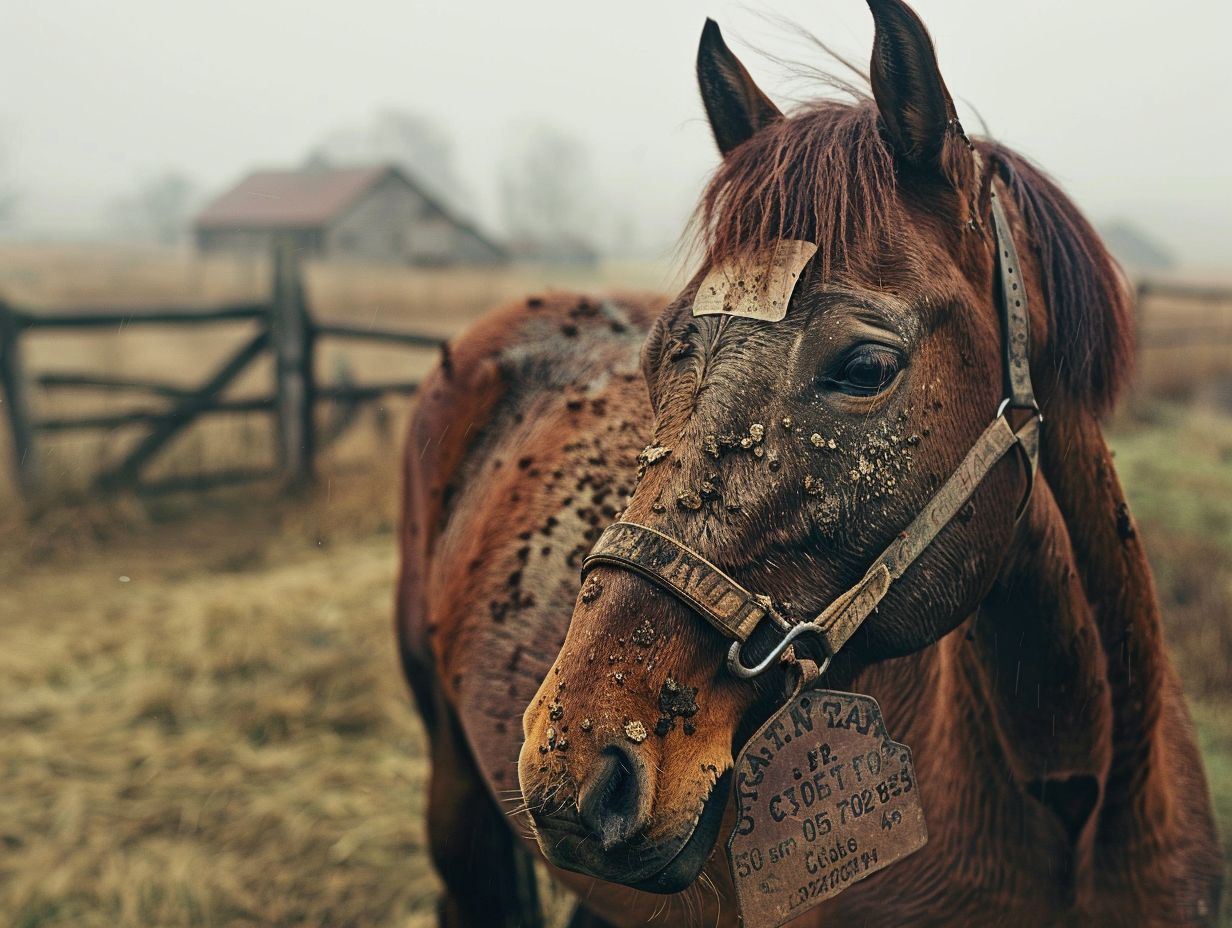If you are a horse owner, it is essential to grasp the information presented on horse feed labels to ensure your horse is receiving the correct nutrition. This article will examine the essential nutrients to seek on the tag, such as protein, carbohydrates, and fat.
Additionally, it will cover various types of horse feed, including grain mixes, pellets, and supplements. Guidance will be provided on selecting the appropriate feed for your horse based on factors like age, activity level, and health requirements.
Furthermore, the article will detail how to analyze and understand ingredient lists, enableing you to make well-informed choices regarding your horse’s dietary needs.
Understanding Horse Feed Labels

Understanding horse feed labels is crucial for you as a horse owner to ensure your equine companions receive the proper nutrition. These labels provide essential information about the feed’s composition, quality, and recommended feeding guidelines.
By deciphering these labels, you can gain insights into the ingredients used in the feed, allowing you to tailor your horse’s diet to meet specific nutritional needs. Plus ingredient details, nutritional information such as protein, fiber, fat content, and vitamins are outlined on the labels, helping you make informed decisions about your horse’s diet. Understanding the manufacturer information on the labels can provide you with assurance of the feed’s quality and reliability.
Regularly reviewing and analyzing horse feed labels is a key step towards ensuring the overall health and well-being of your equine partners.
What Information is Included
When examining horse feed labels, you will typically encounter essential information such as the guaranteed analysis, net weight, expiration date, and unique product code. This information is crucial for horse owners and caretakers to ensure the proper nutrition and safety of their animals.
The guaranteed analysis outlines the minimum or maximum levels of key nutrients like protein, fat, fiber, and vitamins in the feed. The net weight specifies the amount of feed in the package, aiding buyers in understanding the quantity they are purchasing. Expiration dates play a critical role in preventing the feeding of expired or spoiled feed to horses. Furthermore, the product code assists in tracking specific batch or production information for quality control purposes.
Key Nutrients to Look for on the Tag
When examining horse feed labels, focus on key nutrients including protein content, fiber content, fat content, essential vitamins, vital minerals, and any additional supplements. These nutrients play crucial roles in maintaining a horse’s overall health and performance. Proteins are essential for muscle development and repair, while fibers aid in digestion and provide energy. Fats serve as a concentrated source of energy and support coat health. Essential vitamins such as A, D, E, and B-complex are necessary for various bodily functions. Vital minerals like calcium, phosphorus, and magnesium are crucial for bone strength and metabolism. Supplements like joint support formulas or electrolytes can further enhance a horse’s well-being.
Protein, Carbohydrates, and Fat
Protein, carbohydrates, and fat are essential elements of horse feed, serving as critical components that offer key functions for your horse’s nutrition. Proteins are made up of amino acids, which serve as the foundational blocks for muscle development and repair in horses.
Carbohydrates, found in sources like hay and grains, act as the primary source of energy, supporting various bodily functions and activities. Fats are crucial for providing concentrated energy, promoting healthy skin and coat, and aiding in the absorption of fat-soluble vitamins.
Properly balancing these nutrients is vital in ensuring optimal health, performance, and overall well-being for your horses.
Types of Horse Feed

Various types of horse feed are available to you, including forage, grains, pellets, hay, roughage, and specialized supplements tailored to meet specific dietary needs.
- Forage, such as fresh grass or hay, is a staple in a horse’s diet, providing essential fiber and nutrients for digestive health.
- Grains like oats, corn, and barley are often used to add energy and protein to the diet.
- Pellets offer a convenient way to ensure horses receive all necessary vitamins and minerals.
- Hay serves as a crucial source of roughage, supporting proper digestion and dental health.
- Supplements, like vitamins and minerals, can address specific deficiencies or enhance overall well-being.
Grain Mixes, Pellets, and Supplements
Grain mixes, pellets, and supplements play vital roles in enhancing a horse’s diet, providing essential nutrients such as probiotics, prebiotics, amino acids, antioxidants, and digestive aids for optimal digestion and metabolic support.
These specialized feeds not only support the overall health and well-being of your horse but also assist in meeting specific nutritional requirements based on factors like age, activity level, and health condition. Probiotics and prebiotics contribute to a healthy gut flora, aiding in better absorption of nutrients. Amino acids are crucial for muscle development and repair, ensuring your horse’s physical condition remains optimal. Antioxidants play a critical role in combating oxidative stress, while metabolic support elements help maintain your horse’s energy levels and metabolic functions.
How to Choose the Right Feed for Your Horse
When selecting the appropriate feed for your horse, you should consider various factors such as feeding recommendations, storage guidelines, expiration dates, and product codes to ensure optimal nutrition and feed quality.
When determining the right type of feed for your equine companion, it is important to take into account specific dietary requirements based on factors like age, activity level, and any existing health conditions. Consulting a veterinarian or equine nutritionist for personalized advice is essential in making informed decisions.
Proper storage practices are crucial for maintaining the freshness and nutritional value of the feed. It is advised to regularly check expiration dates on feed bags and strictly adhere to them to prevent feeding spoiled or ineffective products. Understanding product coding can also help in tracking batch information for quality control purposes.
Considering Age, Activity Level, and Health Needs
When selecting horse feed, you should consider factors such as the horse’s age, activity level, and specific health requirements to ensure tailored nutrition that meets your horse’s unique needs.
Age plays a crucial role in determining the type of feed your horse needs. Younger horses, for example, require feed rich in proteins and essential nutrients to support their growth and development. On the other hand, senior horses may benefit from specialized feeds that cater to their aging bodies.
The horse’s activity level must be taken into account; high-performance horses need a diet that provides sustained energy, while leisure horses may require a more balanced approach.
Health considerations are pivotal as well. Some horses might have dietary sensitivities or conditions that necessitate specific types of feed. By accounting for these factors, you can ensure that your horse receives optimal nutrition for overall well-being.
Reading and Interpreting Ingredient Lists

Understanding how to read and interpret horse feed ingredient lists is essential for assessing dietary fiber content, moisture levels, serving sizes, and recommended daily portions for your equine companion.
When examining the ingredient list on your horse feed, valuable insights into the nutritional value it provides can be gained. The presence of fiber-rich ingredients, such as beet pulp or alfalfa, can indicate a balanced diet. It is crucial to monitor moisture content, as it affects the overall quality of the feed.
Serving recommendations on the packaging help you understand how much your horse should consume per meal. Calculating daily portion sizes based on your horse’s weight and activity level ensures they receive the right amount of nutrients.
Common Ingredients and What They Mean
Common ingredients in horse feed play a critical role in equine nutrition, focusing on sustainably sourced components, stringent quality control measures, traceable batch numbers, and recommended feeding frequencies for optimal health.
They are carefully selected to ensure a balanced diet that meets the nutritional needs of horses. High-quality ingredients such as fiber-rich hay, protein-packed grains, and essential vitamins and minerals are vital for horse health.
By maintaining strict quality control during the production process, horse feed manufacturers guarantee the safety and effectiveness of their products. Tracking batch numbers allows for quick identification and resolution in case of any issues.
Following feeding frequency recommendations helps prevent digestive problems and maintains a healthy weight for horses.
Frequently Asked Questions
What is Included on a Horse Feed Tag?
A horse feed tag typically includes information about the feed’s ingredients, guaranteed analysis, feeding instructions, and manufacturer’s contact information.
Why is it important to check a horse feed tag?

Checking a horse feed tag is important because it provides you with essential information about the feed’s nutritional content and feeding instructions, which can help you make informed decisions about your horse’s diet.
What is the guaranteed analysis on a horse feed tag?
The guaranteed analysis on a horse feed tag lists the minimum and maximum levels of crude protein, crude fat, crude fiber, and moisture in the feed. This information can help you determine if the feed meets your horse’s nutritional needs.
Can I find the ingredients list on a horse feed tag?
Yes, the ingredients list is usually included on a horse feed tag. It lists all the ingredients in the feed, in descending order by weight. This can help you identify any potential allergens or ingredients your horse may not tolerate well.
What does the feeding instructions section on a horse feed tag mean?
The feeding instructions section on a horse feed tag provides recommendations on how much feed to give your horse based on their weight, age, and activity level. It may also include guidelines for transitioning to the feed and adjusting the amount based on your horse’s individual needs.
Is the manufacturer’s contact information on a horse feed tag important?
Yes, the manufacturer’s contact information is important because it allows you to reach out to them with any questions or concerns about the feed. They can also provide you with more information about the feed’s sourcing, production, and quality control processes.


